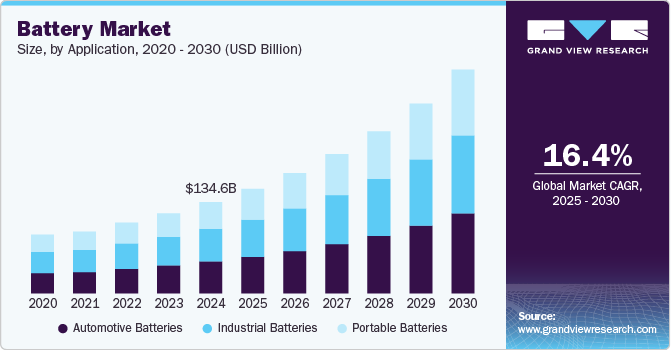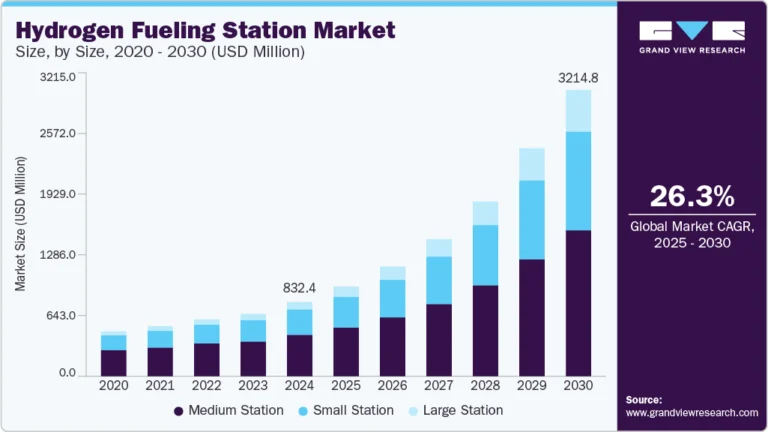Electric Trucks Market Size, Share & Trends Analysis growing at a CAGR of 27.1% from 2024 to 2030

The global electric trucks market size was valued at USD 22.61 billion in 2023 and is projected to reach USD 124.97 billion by 2030, growing at a CAGR of 27.1% from 2024 to 2030. Increasing demand for sustainable logistics, improving battery capacities and charging infrastructure, and stringent environmental regulations have contributed to rapid market growth.
Key Market Trends & Insights
- North America dominated the global market with a revenue share of 37.6% in 2023.
- The U.S. accounted for the largest share of the regional market in 2023.
- Based on vehicle, light duty trucks dominated the market with a revenue share of 64.0% in 2023.
- Based on propulsion, battery electric vehicles accounted for the largest market share in 2023.
- Based on vehicle range, vehicles with a range of up to 300 miles accounted for the highest market share in 2023.
Market Size & Forecast
- 2023 Market Size: USD 22.61 Billion
- 2030 Projected Market Size: USD 124.97 Billion
- CAGR (2024-2030): 27.1%
- North America: Largest market in 2024
Request a free sample copy or view report summary: https://www.grandviewresearch.com/industry-analysis/electric-trucks-market/request/rs1
For instance, the Global EV Outlook 2023 report published by the International Energy Agency (IEA) revealed that over 60,000 medium- and heavy-duty electric trucks were sold worldwide in 2022, and a significant demand was observed from new markets. Additionally, innovations in battery technology and economies of scale have led to significant reductions in battery costs, making electric trucks more competitive with their internal combustion (IC) engine counterparts. As the demand for environment-friendly logistics solutions increases, sales of electric trucks are expected to remain substantial over the forecast period.
A number of stringent emission standards and regulations have been implemented by governing bodies, such as the European Union’s Euro 7, which is aimed at reducing pollution from vehicles, and the U.S. Environmental Protection Agency’s (EPA) Clean Trucks Plan that was announced in 2021 and will be applicable from 2027 onwards. These policies are compelling fleet operators to adopt cleaner alternatives in their operations, driving a higher demand for electric trucks. Furthermore, governments worldwide are offering attractive incentives, such as tax credits, subsidies, and investments in charging infrastructure, to encourage the adoption of electric trucks.
Expansion of fast-charging networks and investments in charging infrastructure have helped address the issue of range anxiety among EV users and made electric trucks a more viable option for long-haul transportation. For instance, the Global EV Outlook 2023 report published by the IEA revealed that about 2.7 million public charging points were available worldwide in 2022, out of which over 900,000 points were installed that year, which was a substantial increase from 2021. The planned development of such infrastructure has encouraged consumers to purchase electric trucks. Moreover, the European Investment Bank and the European Commission, in 2021, agreed to provide 1.5 billion euros in grants by the end of 2023 for establishing alternative fuel infrastructure, such as electric fast charging stations. Furthermore, continuous improvements in electric truck technology, including increased range, payload capacity, and efficiency, are enhancing their appeal among buyers.
Vehicle Insights
Light duty trucks dominated the market with a revenue share of 64.0% in 2023. This is owing to their widespread adoption in urban delivery and logistics applications, where the benefits of electric vehicles are most visible. Light-duty electric trucks are ideally suited for short- to medium-haul routes, offering reduced operating costs, low to zero emissions, and improved performance. The growing demand for sustainable last-mile delivery solutions, driven by the rise of the e-commerce sector and urbanization activities, has further elevated the adoption of light-duty trucks. Additionally, these trucks require less energy to operate, making them more cost-effective and increasing their appeal among fleet operators seeking to minimize their environmental footprint.





